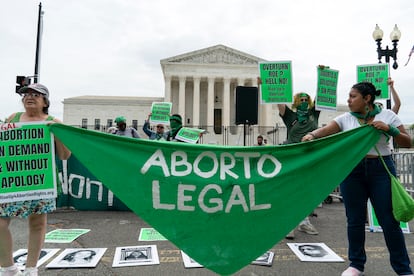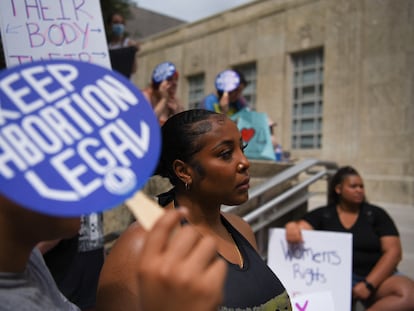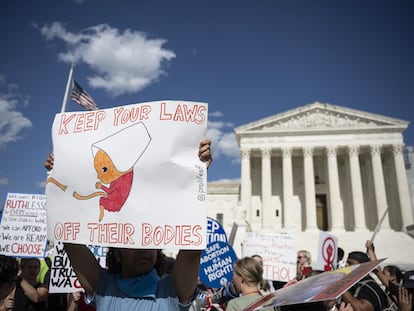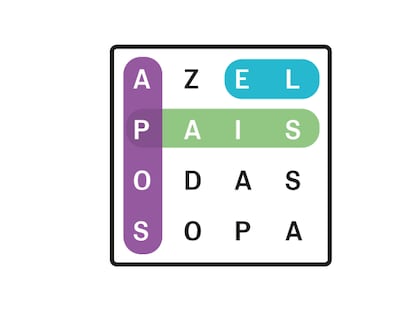Between lack of access and limited resources: Hispanic women bear the brunt of state abortion bans
A new study reveals that in states with tighter restrictions on reproductive rights, births have risen, especially among Latinas


Three hundred miles. That’s the distance the average American woman must travel to a clinic in states that have banned abortion since the U.S. Supreme Court overturned the federal right to the procedure in 2022. Before the court let each state regulate the procedure, opening the door to a total ban in a dozen states, that distance was 50 miles. The ever-widening trek has prevented some women from having abortions and led to an increase in births, according to a new study analyzing 2023 birth data. Those most adversely affected? Hispanic women.
For Hispanic women living 300 miles from an abortion clinic in 2023, births increased 3.8%, compared with a 2.8% increase for the average woman, according to research released recently by the National Bureau of Economic Research. For Black women, it was 3.2%, and for white women, 2%.
Mayra Pineda-Torres, a professor at Georgia Tech and one of the study’s authors, stresses that these findings are not surprising, but they are significant, because it is the first time research of this type has been able to identify the effects of the abortion ban on Hispanic women. “Previous studies focusing on other abortion restrictions usually weren’t able to identify anything for this population group. Not because there was nothing going on for this group. It was just because there was no statistical power to do that,” Torres-Pineda explains to EL PAÍS via phone call.
“But none of this is shocking. This is just relevant because we were able to identify it this time. But this is historically the case. If you think of policies restricting abortion access since the 1970s, nonwhite women have always been impacted the most by abortion restrictions,” the experts adds.
The research is also the first to look in detail at local birth patterns after the Supreme Court decision nearly three years ago. To do so, the authors used birth certificates filed in 2023, with information on the mother’s age, race, marital status, educational attainment, and address. This allowed them to make demographic comparisons and identify Hispanic women as the most impacted by the new bans.
The study’s findings are consistent with those of other research. An earlier paper, using state-level rather than local data, found that births increased by 1.7% in 2023 as a result of abortion bans across states, and more among women who were Hispanic or Black. And another analysis by the National Latina Institute for Reproductive Justice and the National Partnership for Women and Families found that Latinas constitute the largest group of women of color affected by abortion bans. About 6.7 million of them — or 43% of all Latinas of reproductive age — live in states that have banned or restricted the procedure before fetal viability, which is around 24 weeks of pregnancy.
Information, socioeconomic, linguistic and migratory barriers
Despite this reality, abortions have increased nationwide since the Supreme Court decision. Experts attribute the upward trend to a marked increase in the number of abortions performed via telemedicine. Added to these are those performed under the protections of so-called shield laws. These laws protect physicians practicing in states where abortion is still legal from prescribing abortifacient drugs to people living in places where the procedure is prohibited or restricted. However, the results of the new study suggest that these resources are not reaching all women, highlighting that there is an information barrier.
For Pineda-Torres, it’s one thing for the options to exist and another for Hispanic women to know about them and be able to access them. “As a Hispanic, even if I know in theory that I can ask for these pills under the shield laws, I may be too afraid to do so. I may not be able to afford these pills. I may not even know that this option exists,” the researcher explains.
These barriers are in addition to many socioeconomic ones. Hispanic women tend to be poorer and lack private health insurance, so they have to rely on the public health coverage option, Medicaid. Twenty-seven percent of Hispanic women between the ages of 15 and 44 are enrolled in Medicaid, compared to 16% of white women. And in states that prohibit or restrict abortion, Medicaid coverage for abortion is often limited to cases of rape, incest or when the pregnant woman’s life is in danger, leaving many Hispanic women vulnerable.
“This is really a story about privilege,” says Pineda-Torres. “What these policies represent for them in terms of not allowing them to access healthcare is really, really impactful for these women. Whereas for other demographic groups, that’s not really the case in the aggregate. Obviously, individually, people have different experiences. But on the aggregate, for someone who is Hispanic or Black, the impact is greater.”
Alejandra Soto, Planned Parenthood’s communications director for Latino affairs, agrees. “At the end of the day, if you have money sitting in the bank that you can spend, you figure it out. But when you don’t, you need government support. And that’s mostly where the Latino community is,” she says. “But there could also be a Latina who has a higher socioeconomic status and doesn’t need government assistance or public insurance, but she does have the language barrier, so maybe she doesn’t go to the doctor as often as she should.”
Added to that is the fear they may feel due to their immigration status or that of their family members, something that in many cases deters them from going to the doctor. A reality that has only worsened under Donald Trump’s anti-immigrant crusade. “Of course, immigration status is something that scares these women,” stresses the Planned Parenthood spokeswoman. “Even if they have papers, but someone in their family doesn’t. Scores of families with mixed status avoid contact with authority figures.”
This reality is compounded by the fact that doctors and other providers are being arrested for performing abortions in states like Texas, with one of the largest Hispanic populations in the country. Authorities in the ultraconservative state last week arrested Latina midwife Maria Margarita Rojas and two workers at her clinics outside Houston, accusing them of performing illegal abortions and practicing medicine without a license.
Sign up for our weekly newsletter to get more English-language news coverage from EL PAÍS USA Edition
Tu suscripción se está usando en otro dispositivo
¿Quieres añadir otro usuario a tu suscripción?
Si continúas leyendo en este dispositivo, no se podrá leer en el otro.
FlechaTu suscripción se está usando en otro dispositivo y solo puedes acceder a EL PAÍS desde un dispositivo a la vez.
Si quieres compartir tu cuenta, cambia tu suscripción a la modalidad Premium, así podrás añadir otro usuario. Cada uno accederá con su propia cuenta de email, lo que os permitirá personalizar vuestra experiencia en EL PAÍS.
¿Tienes una suscripción de empresa? Accede aquí para contratar más cuentas.
En el caso de no saber quién está usando tu cuenta, te recomendamos cambiar tu contraseña aquí.
Si decides continuar compartiendo tu cuenta, este mensaje se mostrará en tu dispositivo y en el de la otra persona que está usando tu cuenta de forma indefinida, afectando a tu experiencia de lectura. Puedes consultar aquí los términos y condiciones de la suscripción digital.
More information
Archived In
Últimas noticias
Christmas Eve for Christians in Gaza: Confinement, no toys, and explosions near the church
AfD, a key pawn for Trump in Europe, strengthens ties with Washington
From cook to sniper: Ukrainian women fight for equality in the army
Trump succeeds in increasing deportations by hiring military personnel to act as judges
Most viewed
- Christian Louboutin: ‘Young people don’t want to be like their parents. And if their parents wear sneakers, they’re going to look for something else’
- Cartels in Mexico take a leap forward with narco-drones: ‘It is criminal groups that are leading the innovation race’
- ‘El Limones’ and the growing union disguise of Mexican organized crime
- Liset Menéndez de la Prida, neuroscientist: ‘It’s not normal to constantly seek pleasure; it’s important to be bored, to be calm’
- The low-cost creative revolution: How technology is making art accessible to everyone










































